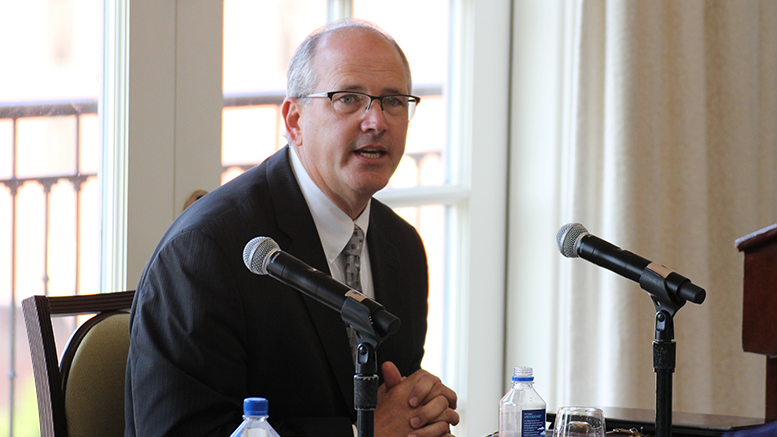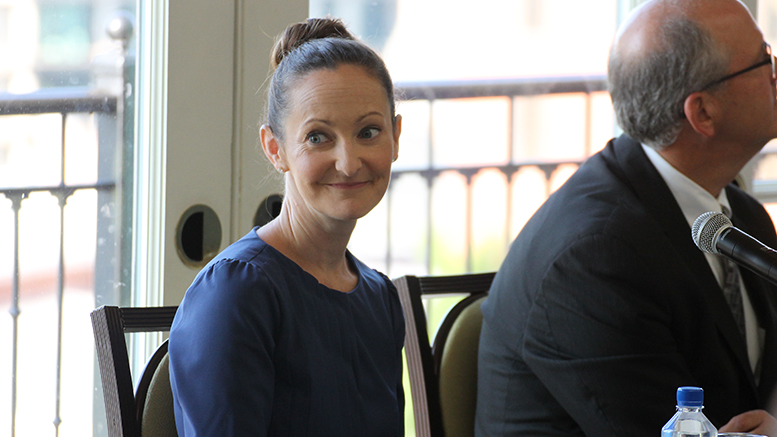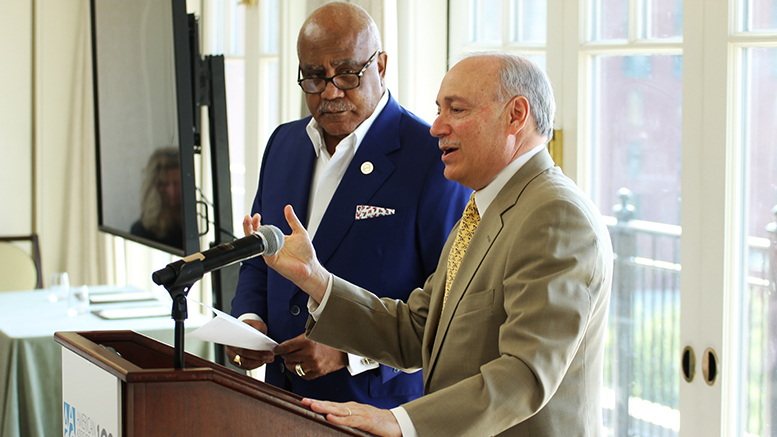Apprenticeships were a focus for federal officials — including acting U.S. Labor Secretary Patrick Pizzella — who last week updated the American Association of Community Colleges (AACC) board of directors on various federal programs and endeavors.
More than 576,000 apprentices have been hired since the start of 2017, Pizzella said during the annual AACC board retreat in Washington, D.C. He added that the number will grow even higher with the expansion of so-called industry-recognized apprenticeship programs (IRAPs).
The Trump administration has made apprenticeships a central part of its efforts to ramp up the number of U.S. skilled workers. Pizzella summarized recently awarded grants for registered apprenticeships, proposals for IRAPs and a new partnership between the department and AACC that places selected community colleges as lead organizations in new apprenticeship efforts.
“We’re coming at all angles on this,” he said.
Not waiting around
Pizzella also encouraged college leaders to work closer with local businesses to learn what they need in their employees.
“The business community is not going to wait for anybody,” he said.
Some companies have already started to work directly with high schools to offer career paths, and others are opening their own programs. For example, healthcare company Kaiser-Permanente is opening its own medical school in Pasadena, California, Pizzella said.
On the ED side
U.S. Education Department (ED) officials speaking at the retreat also addressed apprenticeship efforts. Scott Stump, assistant secretary for career, technical and adult education at ED, said the apprenticeship model has not been embraced in the U.S., although it’s one of the most efficient models of education. Providing more access to pre-apprenticeship programs to high school students could show families a broad array of career options as well as other ways to attain a postsecondary education rather than a four-year degree, he said.

Scott Stump of the U.S. Education Department updates AACC board members about ED programs.
Stump also discussed the persistent misunderstanding in the U.S. about modern community colleges and career and technical education.
Community colleges are “a magical piece of the U.S. education system, one that most people don’t understand,” Stump said. He noted that his daughter this fall will enroll in a community college to study to become a certified nursing assistant.
“Community colleges are not just for other people’s kids; they’re for my kids, too,” he said.
Stump is also experiencing first-hand some of the challenges for students and families when selecting college courses, especially in career-focused programs. For example, his daughter’s high school advisor was pushing her to take algebra in college, although her career path in nursing requires statistics as a math course.
Changing the public’s perception about what modern community colleges offer isn’t an easy task. But both the community college sector and ED are working to change that, Stump said. The department over the next year will run a campaign to raise awareness, particularly around two-year credentials and apprenticeships, he said.
ATB and more
Stump briefed AACC board on several ED activities of interest to community colleges, including progress on the reauthorized Perkins program. As states finalize their new Perkins plans, it’s important for community college leaders to make state officials aware of their institutions’ needs pertaining to the new law, he said.
Stump also updated the board on new information added to the department’s College Scorecard, ED’s federal Work-Study experimental sites (the deadline for applications has been extended to September 23), and progress made this year pertaining to accreditation.

Casey Sacks of the U.S. Education Department outlines options available through the ability-to-benefit program.
In addition, ED officials encouraged colleges to consider using the federal ability-to-benefit (ATB) program, which allows students without a high school diploma or its equivalent to tap federal student aid. Casey Sacks, deputy assistant secretary for community colleges, outlined the options for students to qualify for student aid under ATB: complete six postsecondary credits in a career pathway; pass an ED-approved standardized test; or be admitted through a “state-defined process” – for example, a state could design a process that uses multiple measures to assess a student’s ability to benefit from a postsecondary program.
Some colleges may be wary of using the six-credit option because many students can’t even afford that, Sacks said. But she encouraged colleges to be creative in finding ways to help students pay for those credits. For example, colleges can tap federal job training programs through the Workforce Innovation and Opportunity Act to pay for those first six credits.
“We’re trying to talk about it more because it’s such a good option,” Sacks said.
She also noted that the state-defined option gives states more flexibility. Wisconsin submitted such a proposal and is working with Center for Law and Social Policy on how to get more students involved in ATB. Other states are also considering it, she added.
Dual enrollment on leaders’ minds
AACC board members at the retreat also discussed dual enrollment, which continues to expand, but with some growing concern. Dual enrollment has helped many community colleges keep their enrollments steady at a time when many potential students are opting to work during the current robust economy rather than go to college.
A new AACC report shows that dual/concurrent enrollments have been on the rise at community colleges, going from 4.5 percent of their students in 2001, to 11.2 percent in 2017. In Iowa, dual enrollment comprises about one-third of all community college enrollments in the state. Among some individual community colleges across the county, those rates are half and even 60 percent.
The rise of dual enrollment has brought challenges. Some education advocates see relying too much on dual enrollment as troublesome, especially when it comes to securing more state funding for community colleges.
And while some dual-enrollment advocates would like to tap Pell grants to pay for dual enrollment, if students are eligible, others warn that could be problematic as such students may use up their Pell eligibility before they even enter college.
It also appears that mainly affluent students have been taking dual-enrollment courses, according to community college leaders. These students are already likely to go to college, compared to poorer students who would benefit from such an experience that could encourage them to go on to college after high school.

